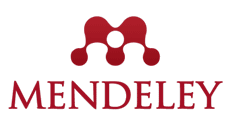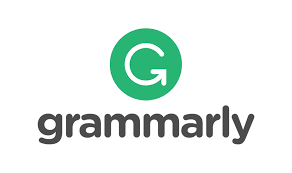Pengaruh Penggunaan Media Pembelajaran terhadap Hasil Belajar Matematika Siswa Kelas III MI Ma’arif Pijenan
DOI:
https://doi.org/10.57176/jn.v3i1.72Keywords:
media pembelajaran, alat peraga, hasil belajarAbstract
Penelitian ini dilaksanakan untuk mengetahui pengaruh penggunaan alat peraga matematika terhadap hasil belajar siswa kelas III di MI Ma'arif Pijenan. Metode yang diterapkan dalam penelitian ini adalah pendekatan kuantitatif dengan desain Pre-Experimental One Group Pretest-Posttest. Subjek penelitin ini adalah siswa kelas III MI Ma’arif Pijenan dengan jumlah 24 siswa. Instrumen penilaian berupa tes kognitif yang terdiri dari soal esai dan uraian. Sebelum penggunaan media terlebih dahulu diberikan soal pretest terkait materi pelajaran yang akan disampaikan. Setelah siswa mengerjakan soal pretest dilanjutkan dengan guru memberikan treatment yaitu menyajikan sebuah pembelajaran yang melibatkan alat peraga di dalamnya. Hasil analisis tes kognitif dan uji paired samples t-test menunjukkan adanya korelasi antara kedua set data hasil uji menyatakan koefisien korelasi sebesar 0,690 dengan signifikansi 0,000, hal ini mengindikasikan bahwa tidak ada korelasi antara kedua pasangan data tersebut selanjutnya pada tabel selanjutnya diketahui nilai t yaitu -16.504 dengan signifikansi (2-tailed) bernilai 0.000. Hasil ini menunjukkan terdapat perbedaan signifikan antara nilai pretest dan posttest. Lebih lanjut, Hasil ini menggambarkan adanya perbedaan yang signifikan antara nilai pretest dan nilai postest. Selanjutnya, karena nilai t yang negatif bermakna bahwa secara keseluruhan, nilai posttest lebih baik dibandingkan nilai pretest. Dengan demikian, penggunaan alat peraga matematika dalam pembelajaran memiliki pengaruh terhadap hasil belajar siswa.
__________________________________________________________________________________________________________________________________
This research was conducted to determine the effect of using mathematics teaching aids on the learning outcomes of third grade students at MI Ma'arif Pijenan. The method applied in this study was a quantitative approach with the Pre-Experimental One Group Pretest-Posttest design. The subjects of this study were class III MI Ma'arif Pijenan students with a total of 24 students. The assessment instrument was a cognitive test consisting of essay questions and descriptions. Before using the media, pre-test questions related to the subject matter to be delivered are first given. After students work on the pre-test questions, it is continued with the teacher giving treatment, namely presenting a lesson that involves teaching aids in it. The results of the analysis of cognitive tests and paired samples t-test showed that there was a correlation between the two data sets. The test results stated a correlation coefficient of 0.690 with a significance of 0.000, this indicated that there was no correlation between the two data pairs. In the next table, it is known that the value of t is - 16,504 with a significance (2-tailed) value of 0,000. These results indicate that there is a significant difference between the pretest and posttest values. Furthermore, these results illustrate that there is a significant difference between the pretest scores and posttest scores. Furthermore, because the t value is negative, it means that overall, the posttest score is better than the pretest value. Thus, the use of mathematical teaching aids in learning has an influence on student learning outcomes.
References
Agustin, I. N. N., & Supriyanto, A. (2020). Permasalahan Pendidikan Di Indonesia. In Seminar Nasional Arah Manajemen Sekolah pada Masa dan Pasca Pandemi Covid-19.
Anderson, L.W & Karthwohl.D. (2010). Kerangka Landasan untuk Pembelajaran, Pengajaran, dan Asasmen. Yogyakarta: Pustaka Pelajar.
Arifin, Zainal. (2014). Evaluasi Pembelajaran. Bandung: Rosdakarya.
Arsyad, Azhar. (2014). Media Pembelajaran. Jakarta: PT Raja Grafindo Persada.
Della Sari, dkk. (2018). Pengaruh Media pembelajaran Visual terhadap Hasil Belajar Ekonomi Siswa. Jurnal Neraca. Vol 2, No. 2, hlm 71-80.
Fimansyah, D. (2015). Pengaruh Strategi pembelajaran dan minat belajar terhadap hasil belajar matematika. Judika (Jurnal Pendidikan UNSIKA), 3(1).
Gulo, D. 1982. Kamus Psikologi. Cetakan I. Bandung: Tonis. Nasution. 2005. Pengantar Psikologi Pendidikan Dasar. Yogyakarta: Cemerlang Publishing.
Hamzah. (2014). Perencanaan dan Strategi Pembelajaran Matematika. Jakarta: Raja Grafindo Persada.
Khotimah, S. H., & Risan, R. (2019). Pengaruh penggunaan alat peraga terhadap hasil belajar matematika pada materi bangun ruang. Jurnal Penelitian Dan Pengembangan Pendidikan, 3(1), 48-55.
Kristiani, N., & Prasetyo, Z. K. (2016). Keefektifan pembelajaran metematika melalui penggunaan media benda konkret pada kelas V SD. Timuran. Jurnal Prima Edukasia, 4(2), 163-175.
Montolalu, C., & Langi, Y. (2018). Pengaruh pelatihan dasar komputer dan teknologi informasi bagi guru-guru dengan uji-t berpasangan (paired sample t-test). d'CARTESIAN: Jurnal Matematika dan Aplikasi, 7(1), 44-46.
Nurrita, T. (2018). Pengembangan media pembelajaran untuk meningkatkan hasil belajar siswa. Jurnal misykat, 3(1), 171- 187.
Prananda, G., Friska, S. Y., & Susilawati, W. O. (2021). Pengaruh Media Konkret Terhadap Hasil Belajar Materi Operasi Hitung Campuran Bilangan Bulat Siswa Kelas IV Sekolah Dasar. JEMS: Jurnal Edukasi Matematika Dan Sains, 9(1), 1- 10.
Sagala, Syaiful. (2014). Konsep dan Makna Pembelajaran. Bandung: Alfabeta.
Sagita, M., & Kania, N. (2019). Penggunaan Alat Peraga dalam Pembelajaran Matematika Di Sekolah Dasar. Prosiding Seminar Nasional Pendidikan , 1, 570-576.
Sudjana, Nana. (2013). Dasar-Dasar Proses Belajar Mengajar. Bandung: Sinar Baru Algensindo.
Susanto, Ahmad. (2014). Teori Belajar dan Pembelajaran di Sekolah Dasar. Jakarta: Kencana Prenada Media Group.
Wahab Abdul. Dr, dkk. (2021). Media Pembelajaran Matematika. Aceh: Yayasan Penerbit Muhammad Zaini.
Downloads
Published
How to Cite
Issue
Section
License
Copyright (c) 2023 Nensi Kusumandari, Heru Purnomo

This work is licensed under a Creative Commons Attribution-ShareAlike 4.0 International License.
You are free to:
- Share — copy and redistribute the material in any medium or format for any purpose, even commercially.
- Adapt — remix, transform, and build upon the material for any purpose, even commercially.
- The licensor cannot revoke these freedoms as long as you follow the license terms.
Under the following terms:
- Attribution — You must give appropriate credit , provide a link to the license, and indicate if changes were made . You may do so in any reasonable manner, but not in any way that suggests the licensor endorses you or your use.
- ShareAlike — If you remix, transform, or build upon the material, you must distribute your contributions under the same license as the original.
- No additional restrictions — You may not apply legal terms or technological measures that legally restrict others from doing anything the license permits.
Notices:
You do not have to comply with the license for elements of the material in the public domain or where your use is permitted by an applicable exception or limitation .
No warranties are given. The license may not give you all of the permissions necessary for your intended use. For example, other rights such as publicity, privacy, or moral rights may limit how you use the material.
















